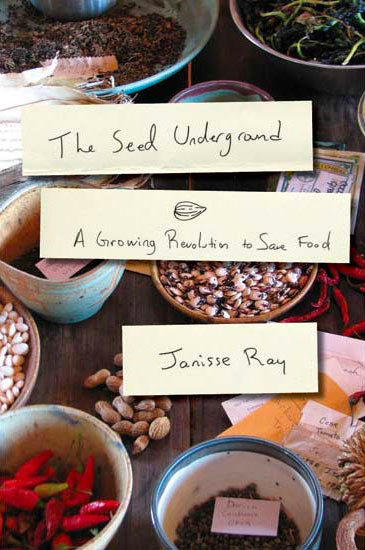The Seed Underground: A Growing Revolution to Save Food
In The Seed Underground, Janisse Ray uses a humanistic tone and nonfiction prose style to redefine humanity's connection with seeds. Beginning by defining a seed as “the most hopeful thing in the world,” Ray literally and metaphorically plants seeds of hope in her readers as she writes about the biology of plant diversity, the corrupt monetization of GM seeds, and the future of seed saving (Ray, xiv). Not only does this book empower small farmers and plant lovers, but it demonstrates the importance of oral tradition and food history, for there is a story within each seed.
This book follows Ray's journey from farm to farm as she meets gardening revolutionists who are saving heirloom seeds and protecting our earth's diversity. Ray documents the stories of eccentric people growing eccentric plants, and the reader gains an intimate look into how foods are supposed to be grown. In the end, one finishes reading The Seed Underground with the understanding that seeds and humans are codependent and that in growing seeds “we are leaping into the universe, and not only will we be given a parachute to save ourselves, we will be able to steer our course” (Ray, 194). This book urges everyone to plant seeds out of love and to protect our planet's unique and diverse history.
At the end of her book, Ray provides a list of resources that inspire her readers to apply the topics covered in The Seed Underground to their own lives. These applicable resources include “what you can do” suggestions such as eating real food, promoting local farmers, becoming a seed activist, and working to pass laws that make America a GM-free nation. Another resource is “Farmer rights” where Ray outlines the ideal list of rights that should belong to every farmer. These rights emphasize the farmer's right to choose diversity and be free of regulations sponsored by big, industrialized agriculture.
I encourage everyone to visit a small, organic farm and talk with the farmer to learn their story and the stories that are held within their seeds. Finally, Ray touches on the topic of living “on many edges: balancing the needs of the wild with the need to nourish people,” and this idea directly connects to the permaculture principle to use the edges and value the marginal (Ray, 191). We all teeter on the cusp between tradition and modernity, between the past and the future, between creating life and slowly destroying it, but we can plant seeds on all these edges and watch as life continues to persist and grow.
Ray, J. (2012). The Seed Underground: A Growing Revolution to Save Food. White River Junction, VT: Chelsea Green Publishing.
— Nicole Hatfield
